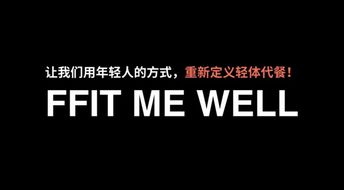Strategies and Insights in Teaching Fashion Designing for Textile Materials
I. Introduction to Textile Materials and their Impact on Fashion Design
Fashion designing is an art that blends creativity with the practicalities of textile materials. Textiles play a crucial role in defining fashion, as they provide the foundation upon which garments are constructed. In this section, we will explore the various textile materials available, their properties, and how these factors influence design choices.
A. Overview of Textile Materials

Textiles can range from simple woven fabrics to complex knitted and crocheted structures. Each material type has unique characteristics that designers must understand to create garments that look and feel right. Some common textile materials include cotton, silk, wool, polyester, nylon, and blends like cotton-polyester.
B. Properties of Textile Materials
The properties of textiles significantly impact design decisions. For instance, cotton, a popular choice due to its breathability and comfort, is commonly used for summer wear. On the other hand, wool, renowned for its insulation properties, is often favored by designers for winter garments.
C. Impact of Textile Materials on Design Choices
The choice of textile materials significantly affects the final product. For example, a designer might choose a lightweight and breathable fabric for a summer dress, while a thicker, warmer material like wool might be preferred for a coat. Additionally, the texture and weave of the fabric can influence how it feels against the skin and how it looks.
II. Techniques of Textile Fabrication
Once a designer has chosen the appropriate textile material, they need to master the techniques involved in fabrication. This includes understanding how different fabric construction methods affect the garment's appearance and performance.
A. Weaving and Embroidery
Weaving techniques involve interweaving threads in a specific pattern, giving rise to the distinctive texture and pattern of woven fabrics. Embroidery adds a decorative touch to the garment, creating intricate patterns that enhance the garment's visual appeal.
B. Knitting and Crocheting
Knitting involves looping individual yarns to form solid shapes or textures. Crocheting, on the other hand, involves using smaller hooks to create delicate stitches, resulting in softer, more flexible fabrics. Both techniques offer endless possibilities for creating unique designs.
C. Printing and Dyeing
Printing involves applying patterns onto the fabric before dyeing or finishing. Dyeing allows designers to add vibrant colors without affecting the fabric's structure. These techniques can transform simple fabric into statement-making garments.
III. Challenges in Textile Designing
Despite the myriad of techniques and materials available to fashion designers, there are several challenges that designers face when working with textile materials.
A. Choosing the Right Texture for a Design
Different textiles have distinct textures that affect the overall aesthetic of the garment. A designer must carefully choose the texture that complements the intended message or mood of the design.

B. Managing Color Coordination
Color coordination is critical when using multiple textile layers or when integrating color with other materials like leather or metal. The designer must ensure that the colors work harmoniously together, creating a cohesive and visually appealing design.
C. Ensuring Durability of Textiles
Textiles must withstand the test of time and wear. The designer must consider factors such as washing instructions, shrinkage, and resistance to fading when selecting materials for their projects.
IV. Case Study: Successful Textile Design Project
In this section, we will delve into a successful textile design project, highlighting the challenges encountered and the strategies employed to overcome them.
A. Problem Identification
Our client wanted a high-fashion collection that incorporated luxurious materials like cashmere and silk. However, they faced challenges in achieving a balance between the natural beauty of the materials and the functional needs of modern fashion.
B. Strategy Development
To tackle this challenge, our team conducted extensive research into the properties of each material and sought inspiration from luxury fashion brands. Our goal was to create designs that not only showcased the beauty of these materials but also provided functionality for the wearer's daily needs.
C. Implementation and Results
Using our knowledge of textiles, we designed a collection of dresses and jackets that incorporated both luxurious fabrics and practical details like zippers and pockets. Our approach was met with success as our clients were thrilled with the results, and their customers praised the quality and style of the garments.
V. Conclusion and Future Trends in Textile Designing
As fashion continues to evolve, so too do the textile materials available to designers. This session has covered the fundamentals of textile design, including the properties of different textile materials, techniques for fabrication, challenges in creating designs with these materials, and case studies demonstrating successful textile design projects.
A. Key Takeaways from the Session
Designers must have a deep understanding of the properties of different textile materials to create garments that look and feel right. They must also master the techniques of fabrication to achieve the desired aesthetic outcome. Additionally, designers must anticipate challenges and plan accordingly to successfully incorporate luxurious materials into their designs.
B. Future Trends in Textile Designing

As technology advances, we can expect more innovative ways to manipulate and utilize textile materials in fashion design. For example, the integration of smart textiles that respond to environmental factors or changes in temperature will become increasingly popular. Additionally, the use of biodegradable and sustainable materials will become more prevalent as consumers prioritize environmentally conscious fashion choices.
在本次针纺织品教案中,我们将通过理论与实践相结合的方式,深入探讨针纺织品的基本知识、工艺流程以及实际应用,通过案例分析,我们将进一步了解针纺织品行业的现状和发展趋势,本教案旨在帮助教师和学生更好地掌握针纺织品的相关知识,提高实践能力和职业素养。
针纺织品基础知识
- 针织与编织:介绍针织的基本原理和分类,以及编织工艺流程。
- 纺织品材料:介绍针织面料的主要材料及其特性。
- 针纺织品工艺流程:详细阐述针织品的生产流程,包括原料准备、织造、染整和成品检验等环节。
实践操作与案例分析
-
实践操作:通过实际操作演示,让学生了解针织品的制作过程。 (1)准备材料:介绍制作所需的各种材料和工具。 (2)操作步骤:详细讲解针织品的制作过程,包括编织、缝制等步骤。 (3)注意事项:强调操作过程中的安全注意事项和质量控制要点。
-
案例分析:选取一些典型的针纺织品案例,分析其生产工艺、材料选择、设计风格等方面。 (1)案例一:介绍某品牌针织服装的生产流程和设计理念。 (2)案例二:分析某地区针织产业的发展趋势和市场需求。 (3)案例启示:总结案例中的成功经验和不足之处,为学生提供参考和启示。
理论结合实践
理论讲解与案例结合:结合理论知识,分析案例中的实际应用和效果。 (1)理论讲解:详细解释理论知识,包括针织原理、编织技巧等。 (2)案例分析:将理论知识与案例相结合,让学生更好地理解理论知识在实际中的应用。
行业现状与发展趋势
行业现状:介绍当前针纺织品行业的现状和发展趋势。 (1)行业现状:介绍当前市场上的主要品牌和产品类型,以及行业的发展规模和趋势。 (2)发展趋势:预测未来针纺织品行业的发展方向和趋势,为学生提供参考和启示。
教学建议与总结
-
教学建议:针对学生特点和教学需求,提出针对性的教学建议。 (1)教学方法:采用多种教学方法,如讲解、演示、实践操作等,提高教学效果,注重理论与实践相结合,加强学生的实际操作能力和职业素养。 (3)考核方式:采用多种考核方式,如课堂表现、作业、实验报告等,全面评价学生的学习效果。
-
本次教案旨在帮助学生掌握针纺织品的相关知识,提高实践能力和职业素养,通过理论与实践相结合的方式,让学生更好地了解针纺织品行业的现状和发展趋势,我们也希望本次教案能够为教师提供参考和启示,提高教学质量和效果。
Articles related to the knowledge points of this article:
Success Stories of Textile Fabrications
Navigating the Global Market with Xining Textile Recycling Agents
Consumer Complaints about Textile Products in Wuxi A Case Study and Analysis
Understanding the World of Textile Design
The Role of China Health Textiles Association in Promoting Healthy Living



